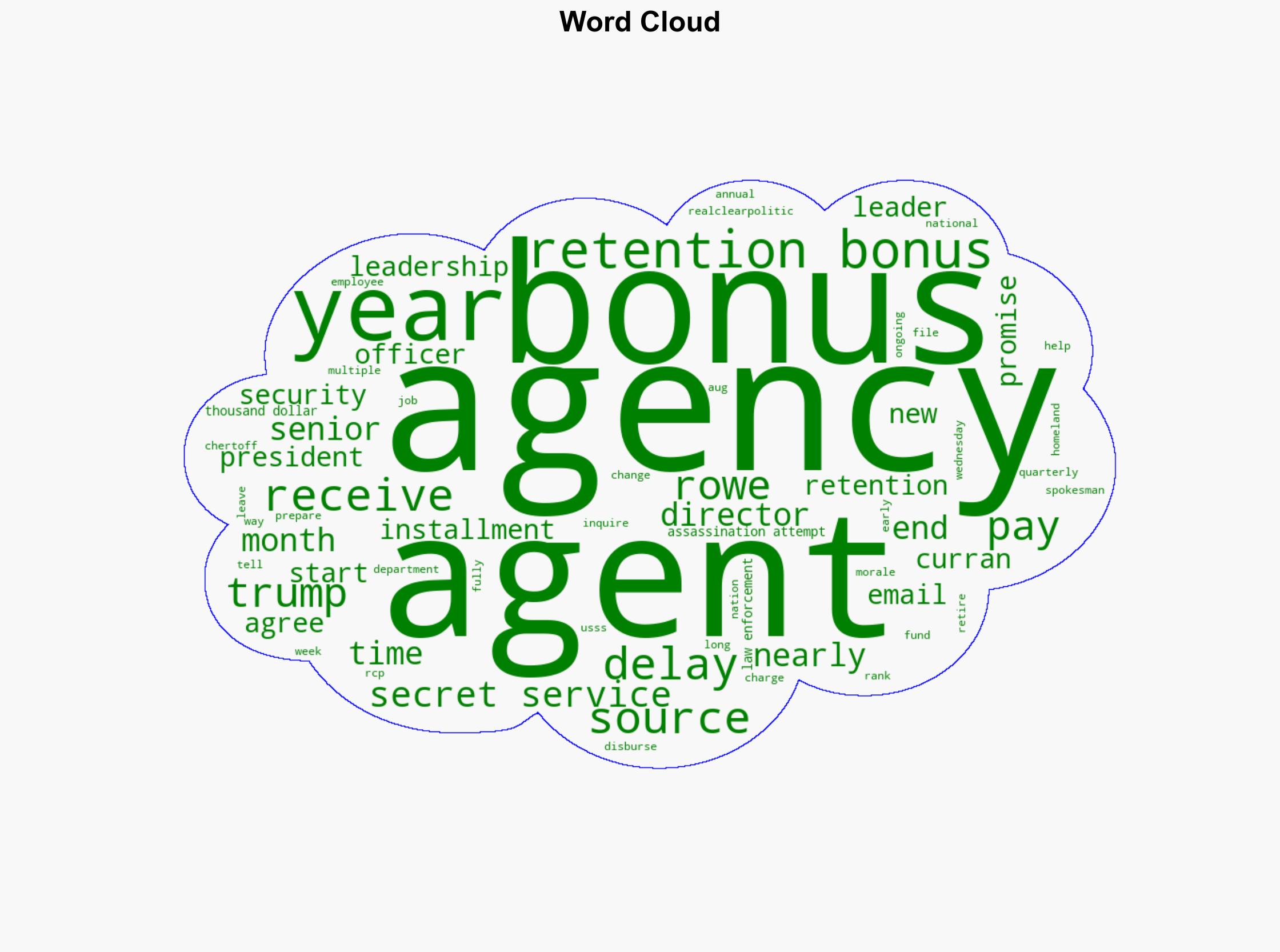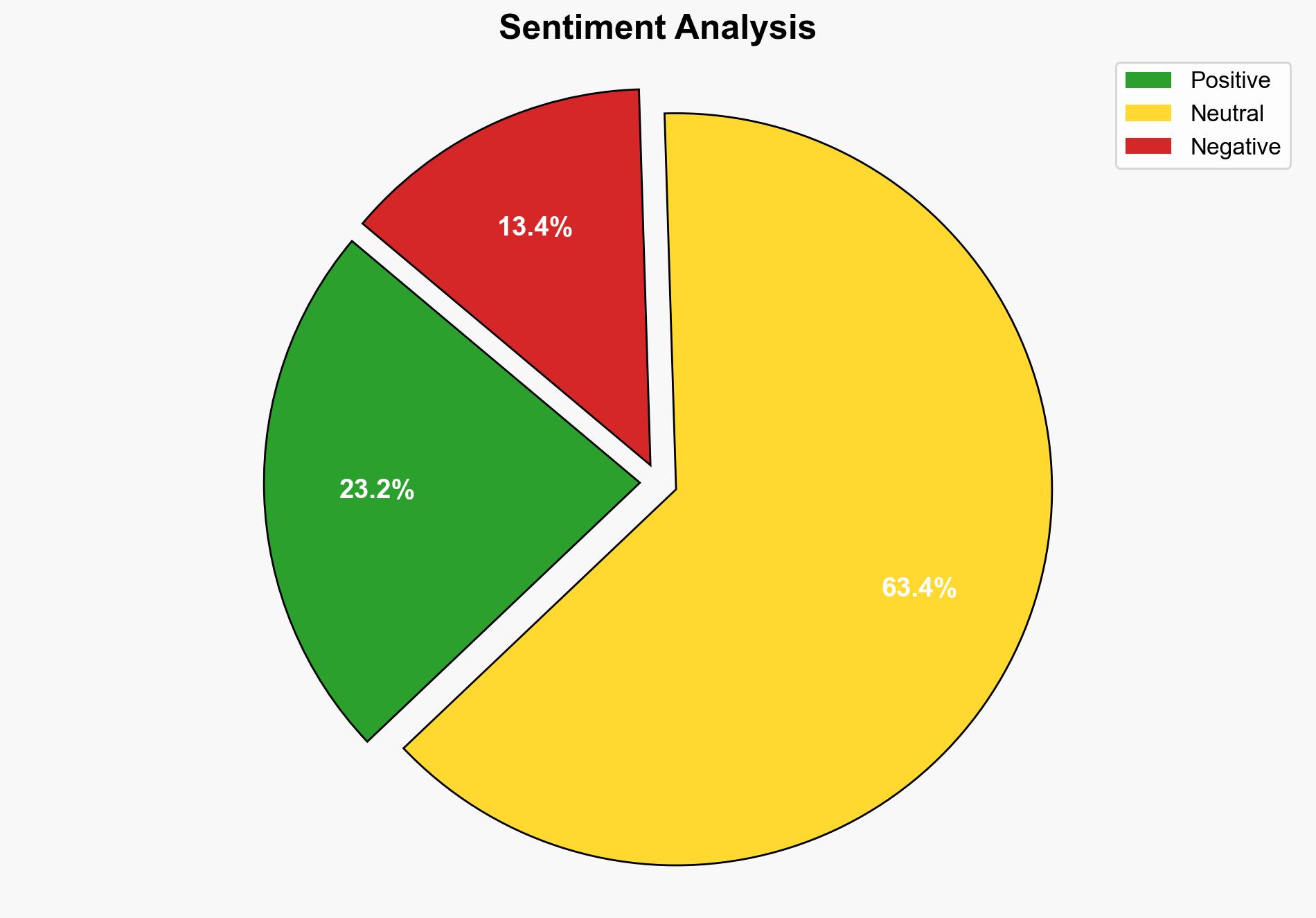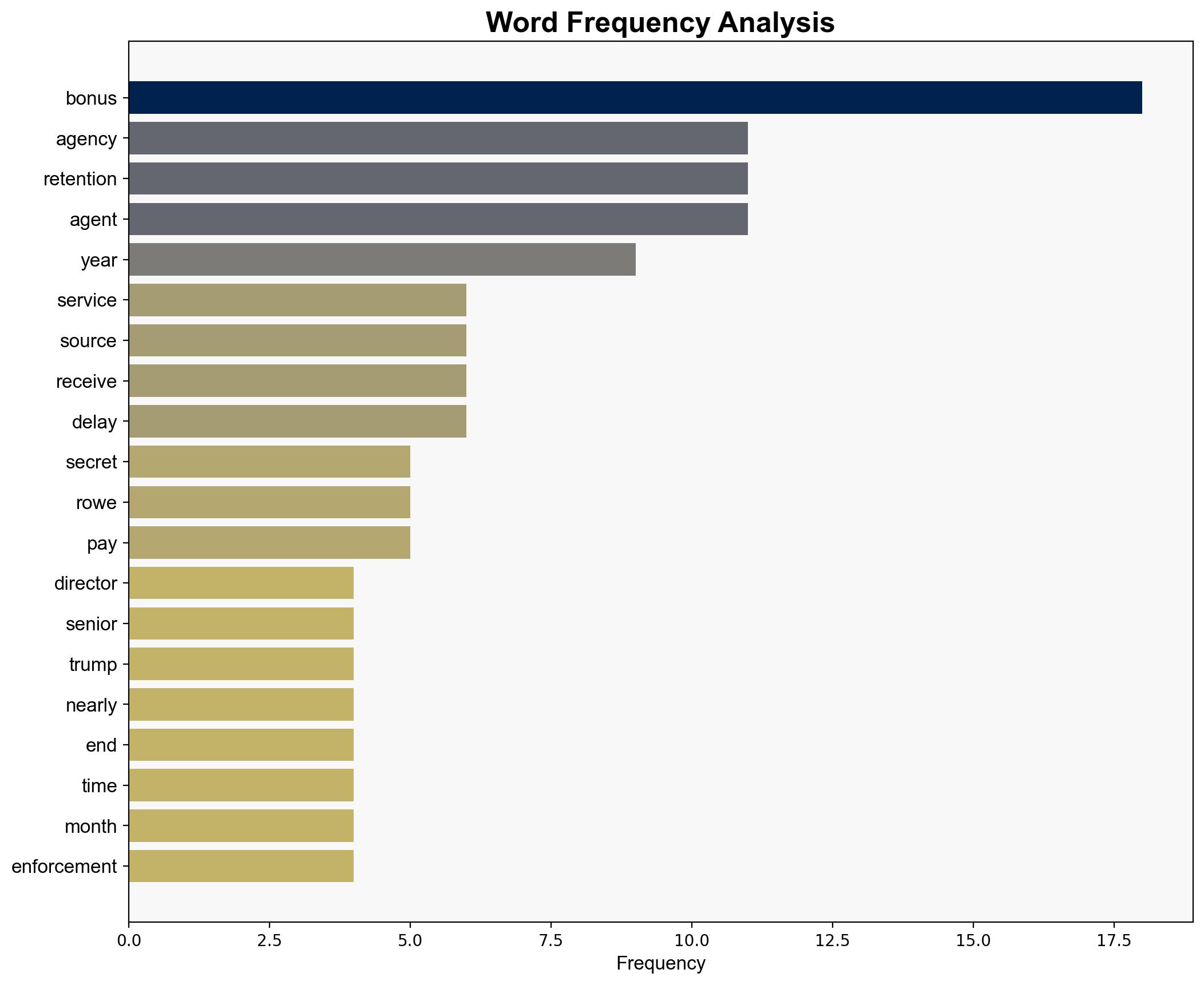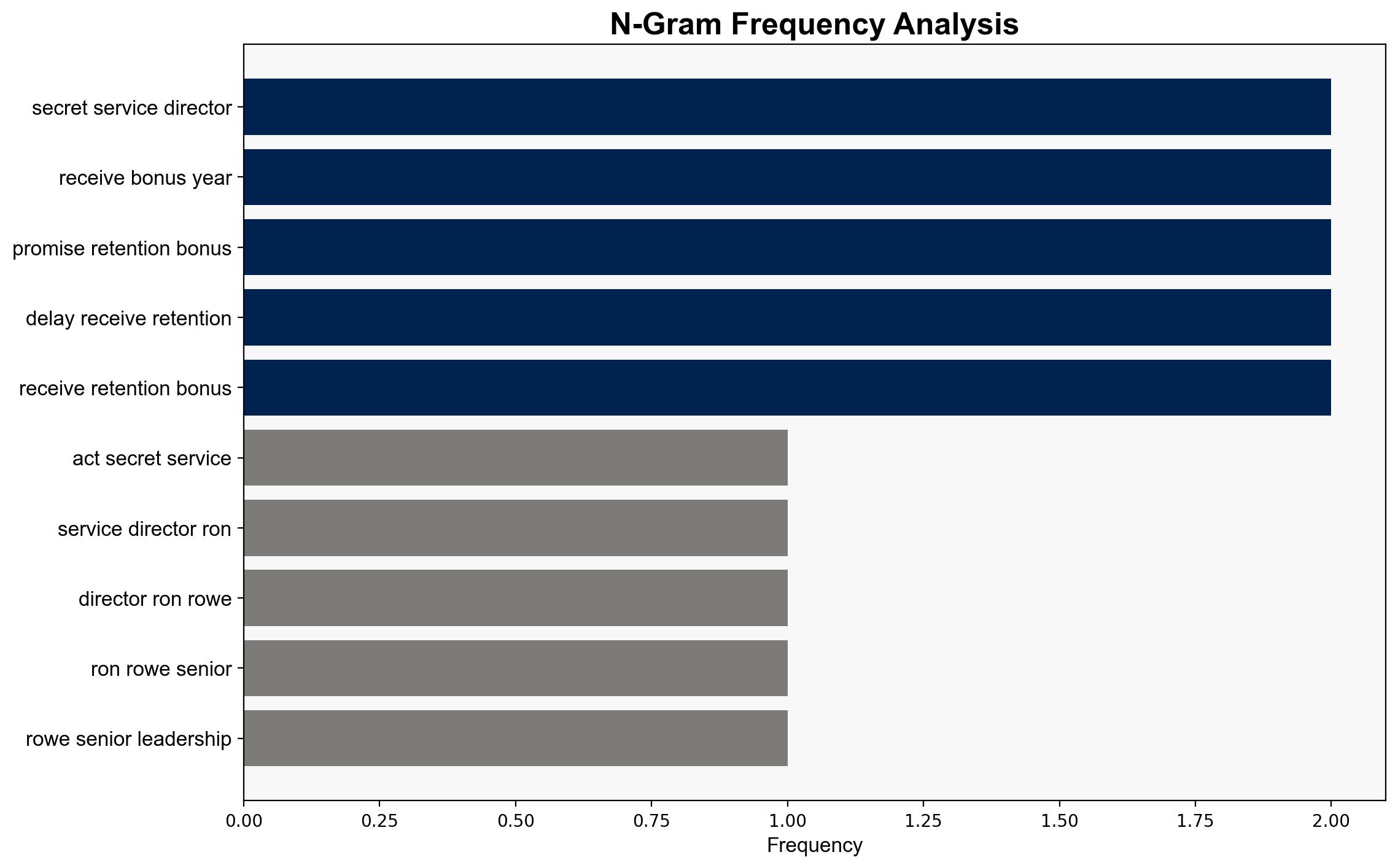Former Secret Service chief paid himself a bonus as Trump was targeted for death – Wnd.com
Published on: 2025-08-24
Intelligence Report: Former Secret Service chief paid himself a bonus as Trump was targeted for death – Wnd.com
1. BLUF (Bottom Line Up Front)
The most supported hypothesis is that the bonus payments to senior Secret Service leadership, including Ron Rowe, were part of standard agency practices, albeit poorly timed and communicated, rather than an intentional act of deception or misallocation of funds. Confidence in this assessment is moderate due to incomplete data on internal agency protocols and potential biases in source reporting. Recommended action includes a thorough audit of the Secret Service’s financial practices and communication strategies to restore trust and morale within the agency.
2. Competing Hypotheses
1. **Hypothesis A**: The bonuses were standard practice and unrelated to the assassination attempt on Trump. The timing was coincidental, and any delays in retention bonuses were due to administrative issues.
2. **Hypothesis B**: The bonuses were inappropriately timed and possibly a misuse of funds, reflecting poor leadership and prioritization, potentially undermining agency morale and effectiveness during a critical period.
Using Analysis of Competing Hypotheses (ACH), Hypothesis A is better supported by the available data, which suggests administrative delays and standard bonus practices. However, the narrative of poor timing and communication supports Hypothesis B to some extent.
3. Key Assumptions and Red Flags
– **Assumptions**: It is assumed that the bonuses were part of a pre-existing policy and that delays were not intentional. Another assumption is that the source accurately reflects internal agency sentiments.
– **Red Flags**: The timing of the bonuses relative to the assassination attempt raises concerns. The lack of detailed information on the decision-making process for these bonuses is a significant blind spot.
– **Potential Bias**: Source may have a bias against current or former agency leadership, influencing the portrayal of events.
4. Implications and Strategic Risks
– **Morale and Trust**: Continued perception of mismanagement could lead to decreased morale and increased attrition within the Secret Service, impacting its operational effectiveness.
– **Public Perception**: Negative media coverage could erode public trust in the agency’s ability to protect national leaders.
– **Operational Risks**: If morale issues persist, they could compromise the agency’s readiness and response capabilities during high-profile events.
5. Recommendations and Outlook
- Conduct a comprehensive audit of the Secret Service’s financial and administrative practices to ensure transparency and accountability.
- Enhance internal communication strategies to address and mitigate morale issues promptly.
- Scenario Projections:
- **Best Case**: Improved transparency and communication restore morale and trust within the agency.
- **Worst Case**: Continued mismanagement leads to significant attrition and operational failures.
- **Most Likely**: Incremental improvements in communication and management practices stabilize the situation.
6. Key Individuals and Entities
– Ron Rowe
– Sean Curran
– Michael Chertoff
– Kimberly Cheatle
– Corey Comperatore
7. Thematic Tags
national security threats, agency management, internal communication, morale and retention




